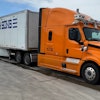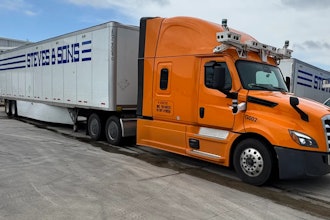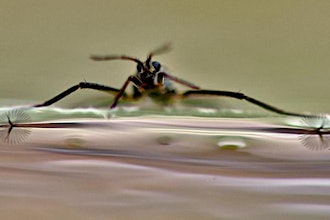
FARMINGTON, Conn. (AP) — Central Connecticut pitcher Michael Delease was throwing fastballs inside the Center for Motion Analysis and wasn't getting much movement on his pitches. His problem was quickly diagnosed by coaches and scientists looking at data gathered by the instrumented pitching mound from which he was throwing, the electrodes attached to his body and the motion-capture cameras in the lab.
A slight arm angle adjustment and moments later, Delease's ball was jumping. "Just a couple little tweaks and my spin rate went up by a few hundred RPMs," the senior said. "It really improved it. That's leaps and bounds from where I was at."
The Center for Motion Analysis at the Connecticut Children's Medical Center is known in the world of kinesiology for its work with athletes, studying how their bodies move and learning how those motions can impact efficiency and injuries. For a week in January, researchers there conducted a study of pitchers using a new tool, the "smart" mound, developed by a company called Newtforce.
The mound, really an instrumented ramp, measures ground forces generated during each part of a pitch, from wind-up to follow-through. When linked to the bio-sensors placed on a pitcher's body and the motion-capture cameras at the lab, it provides a powerful new tool for understanding the mechanics of a pitch.
"Pairing these things together is going to give us the most complete understanding of what a pitcher goes through physically," said Matthew Solomito, a managing research engineer at the lab. "We can now measure pitcher efficiency and see what might make a pitcher at greater risk of injury. And if they are at greater risk of injury, what can we do to make them better?"
In Delease's case, the mound showed something was off with the torque generated around his plant leg. That was affecting his release.
"When you understand movement, the ground whispers to you," said Randy Sullivan, who runs the Florida Baseball Ranch, which trains elite pitchers and was working with the lab's researchers. "If you understand the anatomy, the ground will tell you what the muscles are doing and with this information, we no longer have to guess."
Part of beta testing the mound is figuring out which variables in the data are most important in figuring out how to adjust a pitcher's form issues, said Kyle Barker, who invented the mound at Newtforce. The Baseball Ranch gathered 500 data sets from pitchers. Another 20 came to the Connecticut lab, where their force measurements were paired with the motion imaging for a more complete picture.
The Minnesota Twins have leased a smart mound for spring training this year. There are others at Vanderbilt, Arkansas and at the Florida Baseball Ranch.
"The more data we get, the more we can do with it," said Barker. "We should be able to see some trends in terms of what we're seeing in the force data and the bio-data and perhaps come up with some predictors for things like durability."
Leasing the mound costs between $30,000 and $50,000 a year for fees and setup, depending on the length of the lease and what type of institution wants to use it, Barker said.
Barker believes that within five years, most major college programs and major league teams will be using the technology for coaching, injury prevention and even scouting prospects. "You can compare one pitcher to another," Barker said. "It will show you if there is a form flaw that might make someone a better risk than another prospect."
Delease said he and other players are also likely to embrace the technology. "The results are instantaneous," he said "It's a real advantage."






















